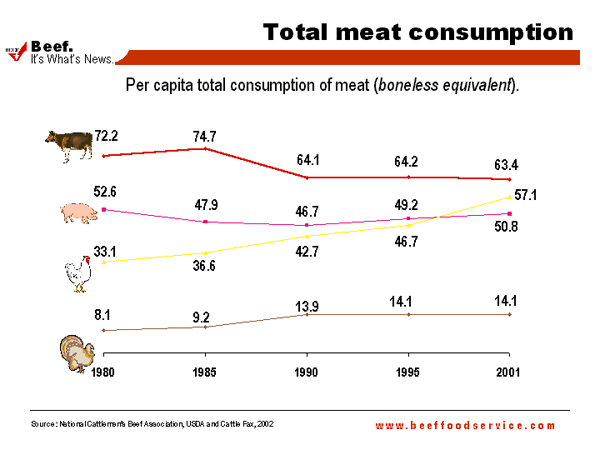| There are only about 173 pounds of beef steaks from a live animal that weighs 1100 pounds; therefore, about 308 pounds of beef from a typical market animal are cuts other than steaks. It is necessary to include these costs in the retail price of beef. |
 |
Interesting Facts |
|
|
Kobe Beef: [KOH-bee] An exclusive grade of beef from cattle raised in Kobe, Japan. These pampered cattle are massaged with sake and fed a special diet that includes plentiful amounts of beer. This specialized treatment results in beef that is extraordinarily tender and full-flavored. It also makes the beef extravagantly expensive, which is why it's rarely available in the United States. Kobe beef is considered the most exclusive beef in the world. |
|
|
|
Last Updated - Thursday, August 09, 2012 04:31 PM |
